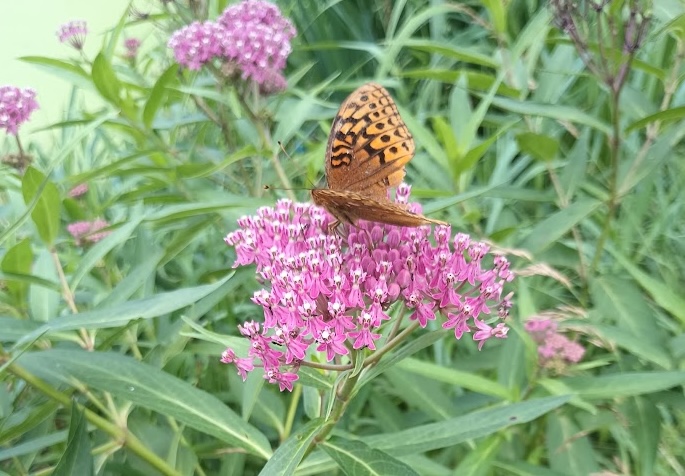Melissa Wubben lives on a farm in Warren County.
Since childhood, I have had a keen interest in the plants and animals that share the planet with us. Whether I was learning to identify “weeds” while walking beans on our family farm or dreaming about seeing particularly pretty birds as I flipped through my mom’s bird identification book, nature provided ample opportunities for education and appreciation.
Later, my fascination with nature turned toward conservation, and my husband and I started our farm with a desire to integrate conservation and agricultural practices.
Our journey began with the purchase of a small flock of sheep in 2012, the first year of severe drought that would last for several years. I began reading about pasture management, soil and water conservation practices, and anything else applicable that I could get my hands on. Eventually, this research led me to native plants.
Native plants are drought tolerant, having extensive root systems that reach for water and nutrients. Those same roots heal the soil by feeding the underground living organisms; improve water infiltration by creating channels through which water can flow into the ground, rather than over the ground; prevent erosion; and become valuable organic matter deep in the soil profile when they die. All of this, and the above ground parts of the plants provide food and habitat for pollinators, birds, and many other living creatures, and they look pretty while doing so!
Our first attempts at growing native plants did not go well, as we were fighting drought, poor soil, and invasive plants that loved to choke out anything that got started. Finally, I decided to start small, creating my first couple of native wildflower gardens by smothering existing vegetation, then amending the soil with composted manure, before putting in started plants. We then mulched with wool and wood chips to further support the new plants and suppress weeds.

This method has worked well for us, and the plants readily self seed into the mulch. Here’s this same garden after it has matured. The yellow blossoms in the foreground are yellow or gray-headed coneflower.

We are in the process of expanding it, with tarps laid out to solarize and smother more lawn, to be replaced with native plants. Having had success, we have been focusing on adding biodiversity as we continue to add more space and additional gardens. The garden pictured above currently has fifteen different species of native flowers and grasses, plus three species of native shrubs!
Butterfly milkweed (orange flowers) with some kind of mountain mint (white flowers):

Purple coneflower blooming in front of sweet coneflower (yellow), also known as sweet black-eyed Susan:

The benefits of diversifying are many: supporting a broader range of insect and bird species, creating a failsafe in case of species specific disease, having plants blooming all season, and having plants living in a variety of habitats.
Early blooming red columbine and wild geranium thrive in the shade of two oak trees:

Our very first native wildflower garden in full summer bloom:

Stiff goldenrod and woodland aster are beautiful together in the fall.

Little bluestem and highbush cranberry add color and texture, even through the winter.


Speaking of native shrubs, several of them provide edible berries, as well as staggered flowering in spring and amazing fall color. In addition to highbush cranberries, we have planted elderberries, nannyberries, aronia, serviceberry, and arrowwood viburnum.
Nannyberry blooming:

Aronia blooming:

Some of these have replaced the burning bushes I planted when we first moved here, not realizing they were invasive. The native shrubs are great on woodland edges, or as backdrops to flower gardens.
Aronia in fall colors:

Serviceberry in the fall:

Our next project in the works is reintroducing wetland species around our pond. I started with a few plants before realizing the invasive reed canary grass was going to be a larger problem than I’d anticipated. We’ve had some luck with both swamp milkweed and blueflag iris.
Butterfly sampling the swamp milkweed:


Once established, the native plants in and around our pond should help capture and utilize nutrients that might otherwise contribute to our waterway pollution. The applications and benefits of native plants seem endless, and I am excited for this newest adventure in native plant gardening!


1 Comment
Nice photos!
The shrubs were especially interesting, because I don’t see shrub photos often. And it was great to see marsh milkweed, one of my favorites. The butterfly is a fritillary, probably great spangled, though I can’t tell for certain.
PrairieFan Sun 17 Aug 2:09 PM